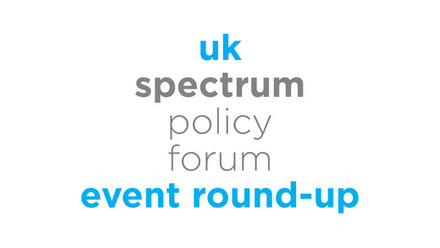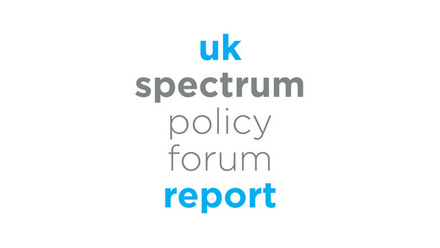UK SPF Cluster 4 Event Round-Up: Key FSS Topics for WRC-2027 (AI 1.1 & 1.2)
The Spectrum Policy Forum (SPF) is pleased to have hosted the UK SPF Cluster 4: Key FSS Topics for WRC-2027, a pivotal event that brought together leading experts and stakeholders to discuss critical issues shaping the future of satellite communications. The focus was on two key agenda items for the upcoming World Radiocommunication Conference 2027 (WRC-27): Agenda Item 1.1 (Q/V-band ESIM) and Agenda Item 1.2 (Ku-band VSAT).
These agenda items are of particular relevance to the satellite industry and other incumbent spectrum users:
- Agenda Item 1.1: To consider the technical and operational conditions for the use of the frequency bands 47.2–50.2 GHz and 50.4–51.4 GHz (Earth-to-space) by aeronautical and maritime earth stations in motion (ESIMs) communicating with geostationary and non-geostationary space stations in the fixed-satellite service (FSS), in accordance with Resolution 176 (Rev.WRC-23).
- Agenda Item 1.2: To consider possible revisions of sharing conditions in the 13.75–14 GHz band to allow the use of uplink FSS earth stations with smaller antenna sizes, in line with Resolution 129 (WRC-23).
Agenda Item 1.1: 47.2-50.2 GHz and 50.4-51.4 GHz
Speakers emphasized the growing demand for broadband connectivity on the move—particularly for aircraft and maritime vessels. The use of Q/V bands by ESIMs (Earth Stations in Motion) is seen as a vital step toward meeting this demand, offering increased spectrum availability and throughput.
The development of a regulatory and technical framework that enables the use of the 47.2–50.2 GHz and 50.4–51.4 GHz bands by ESIMs communicating with both GSO and NGSO networks. This framework must ensure compatibility with incumbent services and maintain consistency across the Ku, Ka, and Q/V bands.
Key considerations include:
- Ensuring regulatory consistency across all ESIM frequency bands.
- Conducting technical studies to demonstrate compatibility with existing services.
- Supporting the development of an ITU-R Recommendation for the Network Control and Monitoring Centre (NCMC), which would help manage ESIM transmissions effectively without hindering their deployment.
Presentations also highlighted the importance of in-band and adjacent-band sharing analyses, particularly with passive services such as Earth Exploration-Satellite and Space Research, and the need to align with outcomes from WRC-23 agenda items related to Ku- and Ka-band ESIMs.
While the satellite industry sees great promise in expanding ESIM operations into the Q/V bands, representatives of incumbent services highlighted the critical importance of protecting adjacent frequency bands used for passive Earth observation. These observations are foundational to accurate weather forecasting and climate monitoring.
The frequency band 50.2–50.4 GHz, which lies adjacent to the proposed ESIM operating bands, is used for passive remote sensing—specifically, for measuring atmospheric temperature profiles. These measurements are essential for initializing weather models and improving forecast accuracy, especially in remote and oceanic regions where other data sources are sparse.
The World Meteorological Organization (WMO) has taken a balanced stance. It does not oppose the operation of ESIMs in the 47.2–50.2 GHz and 50.4–51.4 GHz bands, provided that the protection of passive sensing in the 50.2–50.4 GHz band is maintained. This may require revisiting and potentially revising the current emission limits in Resolution 750 to account for the combined impact of ESIM and traditional FSS operations.
Agenda Item 1.2: Potential and incumbent use in the 13.75 - 14.00 GHz band
The second major topic addressed during the UK SPF Cluster 4 event was Agenda Item 1.2, which focuses on the potential revision of regulatory conditions in the 13.75–14.00 GHz frequency band. This agenda item is particularly relevant to the satellite industry, as it seeks to enable the use of smaller fixed-satellite service (FSS) earth station antennas—an important step toward meeting the growing demand for Ku-band services.
During WRC-23, support for Agenda Item 1.2 came from multiple regions, including Asia, Africa, and the Americas. Nevertheless, current technical requirements are determined by ITU-R Footnotes 5.502 and 5.503. These footnotes were originally designed to protect radiolocation and space research services by limiting the minimum size of earth station antennas and the maximum power flux density they can transmit.
Conclusion
Technical studies conducted under ITU-R Working Party 4A have provided encouraging results. The goal is to address any imbalance that constrains capacity creating a bottleneck that affects service quality and limits the potential for innovation.
The overarching proposal is to develop a modern regulatory framework that enables more flexible and capable of supporting direct-to-home and mobile connectivity. This framework would aim to balance the need for more efficient spectrum use with the continued protection of incumbent services. By doing so, it would unlock new opportunities for satellite connectivity while maintaining the integrity of existing systems.
Slides
Contact us

Tales Gaspar
Tales has a background in law and economics, with previous experience in the regulation of new technologies and infrastructure.

Sophie Greaves
Sophie Greaves is Associate Director for Digital Infrastructure at techUK, overseeing the Communications Infrastructure and Services Programme at techUK, and the UK Spectrum Policy Forum.





